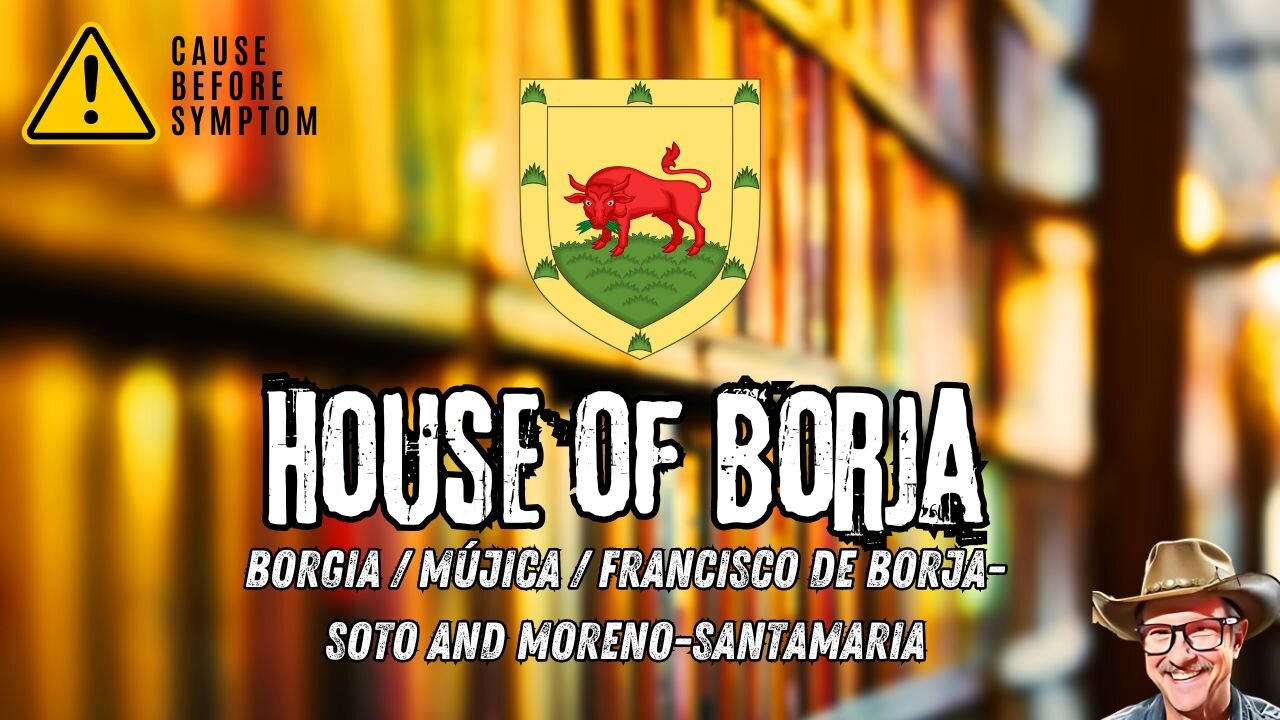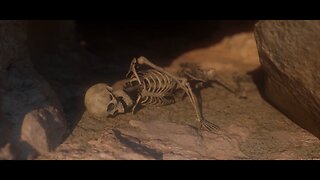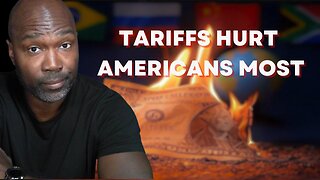Premium Only Content

House of Borja (Borgia / Mújica / Francisco de Borja-Soto and Moreno-Santamaria)
Cause Before Symptom - With Your Host James Carner
House of Borja (Borgia / Mújica / Francisco de Borja-Soto and Moreno-Santamaria)
Breakspear Supporter
The House of Borgia (spelled Borja in Spanish, Valencian, and Aragonese) was an Italian-Aragonese Spanish noble family. The House of Borgia rose to prominence during the Italian Renaissance and were patrons of the arts. And while they contributed to the development of Renaissance art, this was not why they became infamous.
The House of Borgia also grew in power in both the political and ecclesiastical realms in the 15th and 16th centuries. From this family came not one but two Popes: Pope Callixtus III and Pope Alexander IV.
The House of Borgia was a noble family that rose to prominence during the 15 th and 16 th centuries. Originally from Spain, the family established itself in Italy, where they played an important role in the country’s affairs. On the one hand, they were great patrons of the arts, and contributed substantially to the Italian Renaissance. On the other hand, the family was notorious for the innumerable crimes they committed. In fact, it is often the latter that overshadows the former. The House of Borgia had many notable members, the four best-known of whom are Alfonso de Borgia, who became Pope Callixtus III, his nephew, Rodrigo de Borgia, who became Pope Alexander VI, Cesare Borgia, and Lucrezia Borgia, both of whom were Pope Alexander’s children.
The Origins Of The House Of Borgia In Northeastern Spain
The House of Borgia (known in Spanish as Borja) is named after the town they originated from, Borja. This town is located in the province of Zaragoza, which was once part of the Crown of Aragon , in the northeastern part of Spain. In their hometown, the Borgias were part of the nobility, though there was nothing that really made them stand out from the rest of the Spanish noble families in the beginning.
The first member of the House of Borgia that gained prominence was Alfonso de Borgia, who was born on 31 December 1378. As a young man, Alfonso went to the University of Lleida, where he studied canon and civil law. After his graduation, Alfonso first became a professor of law at his alma mater.
Soon, however, Alfonso embarked on a career in politics, and entered into the service of Alfonso V, the King of Aragon . Alfonso not only dabbled with secular politics, but also had a hand in ecclesiastical politics, the two overlapping at times. For instance, Alfonso succeeded in reconciling his master with the pope, Martin V.
In 1429, Martin appointed Alfonso as the Bishop of Valencia . In the years that followed, Alfonso continued to serve the Crown of Aragon. For instance, at one point in time, he was in Naples, which had been conquered by the Aragonese, to reorganize its government. On another occasion, in 1439, Alfonso was the Aragonese representative at a council that sought to re-unite the western and eastern Catholic churches. Although this undertaking ultimately ended in failure, Alfonso succeeded in leaving an impression on his fellow delegates.
In 1444, Alfonso was made a cardinal, as a reward for the negotiations he carried out between the king and the pope. In exchange for papal approval for his hold on Naples, the King of Aragon defended the papacy against its enemies in central Italy. Having been made a cardinal, Alfonso moved to Rome in 1445 and changed his surname from Borja to Borgia.
See image 1
Alfonso Borgia was elected pope on 8 April 1455, and he took the papal name Callixtus III. Two other members of the House of Borgia would also become popes.
On 25 March 1455, Pope Nicholas V died. A papal conclave followed, and Alfonso was elected pope on 8 April 1455, and he took the papal name Callixtus III. He was chosen partly due to his old age (he was not expected to last long as pope), and as a compromise between the Colonnas and Orsinis, two powerful Roman families. One of the first orders of Callixtus was to launch a crusade to recover Constantinople, which had fallen to the Ottomans, for Christendom. Despite his heroic efforts, the crusade did not materialize. Nevertheless, a papal fleet was successfully assembled, which helped to free many Aegean islands.
On the whole, Callixtus could be considered to have been a decent pope. Indeed, even before his election, he had not been a particularly bad clergyman. For instance, he is recorded to have only held one church appointment at the time, was honest, sober, and his personal life was supposedly blameless.
Nevertheless, according to his enemies, he was extremely corrupt. This is not entirely surprising, however, since at that time, popes commonly used their position to aggrandize their own families.
Nepotism was commonplace as well, and Callixtus was notorious this practice. For instance, he promoted two of his nephews to the rank of cardinal. From a pragmatic point of view, however, one might argue that nepotism was considered the best way to build up a power base.
As expected, Callixtus did not occupy the papal throne for a long time, reigning only for three short years. Still, in these three years, Callixtus was able to accomplish a fair bit. Apart from trying to launch a crusade, Callixtus also revised Joan of Arc’s trial, and proclaimed her innocence, issued several papal bulls regarding Portugal’s maritime explorations, and elevated the Feast of the Transfiguration to a feast day (in 1456), to be celebrated annually on 6 August.
Coincidentally, Callixtus died on the day of the Transfiguration in 1458. Incidentally, Callixtus was not buried in St. Peter’s Basilica , where the tombs of most popes are found. Instead, his final resting place is a chapel in Santa Maria in Monserrato degli Spagnoli, the national church of Spain in Rome.
See image 2
The next pope of the House of Borgia was Rodrigo de Borgia who became Pope Alexander VI, one of the most corrupt and notorious popes ever!
The next member of the House of Borgia who rose to prominence was Rodrigo de Borgia, one of Alfonso’s nephews. Rodrigo was born on 1 January 1431 in Játiva, in the Crown of Aragon. Compared to his nephew, Callixtus would seem like a saint. Indeed, Rodrigo, who eventually became pope in 1492, is considered to be one of the most morally depraved men to have occupied the papacy. He is reputed, for instance, to have committed his first murder at the age of 12 and continued to indulge in various immoralities throughout his life.
Rodrigo studied law at Bologna, and was made a cardinal by Callixtus in 1456, when he was only 25 years old. After his uncle’s death, Rodrigo continued to serve in the Roman Curia under the next four popes, before attaining the papacy himself. During this period, Rodrigo gained much administrative experience, and amassed great wealth, but did not attain much power.
In 1492, Pope Innocent VIII died. The three most likely cardinals to succeed him were Rodrigo Borgia, Ascanio Sforza, and Giuliano della Rovere. The outcome of this papal conclave was not dependent on the moral character of each candidate, but on the money that each of them could procure. In the end, it was Rodrigo who won, and he took the papal name Alexander VI.
In other words, Rodrigo quite literally bought the papacy. Alexander’s papacy got off to a promising start. In contrast to his predecessor’s reign, which was marked by anarchy, Alexander administered justice strictly and put an orderly form of government in place. Moreover, he impressed the Romans by displaying the great splendor of the papacy. Alexander was after all a patron of the arts.
Like his uncle before him, Alexander also used his position as pope to enrich the House of Borgia. He went one step further, however, as he was prepared to commit any crime, and was even willing to plunge Italy into war, just so that he could satisfy his greed.
For instance, Alexander had made one of his sons, Giovanni, a cardinal, and Duke of Gandia. The lands that were destined to be the fiefs of the newly created duke included Cerveteri and Anguillara. The latter had been acquired not long before by the Orsinis, with monetary aid from Ferdinand I, the King of Naples. Consequently, Alexander came into conflict with Ferdinand. The pope formed alliances with the king’s enemies, and even encouraged the French to invade Naples.
For all his immorality, however, Alexander was, as mentioned earlier, a great patron of the arts. It was this aspect of the pope that brought such renowned renaissance artists as Raphael, Michelangelo, Donato Bramante, and Pinturicchio to Rome. Amongst other things, a center for the University of Rome was created, the Castel Sant’ Angelo was restored, the Vatican palaces were embellished, and Michelangelo was persuaded to draw plans for the rebuilding of St. Peter’s Basilica.
Alexander has been accused of poisoning his enemies to get rid of them and also of confiscating their wealth. It is a great irony, if it were true, that Alexander was accidentally poisoned by his own son, Cesare Borgia, which resulted in his demise on 18 August 1503.
It has been speculated that Cesare had intended to use the poison on others, but inadvertently poisoned himself and his father. Whilst Alexander died, Cesare recovered. Doubts have been cast on this story, however, and it has been suggested that the pope died of malaria.
See image 3
Pope Alexander of the House of Borgia had two children, Cesare and Lucretia. Cesare was as bad as his father, but his sister was fairly “clean.”
Two of Alexander’s children, Cesare and Lucrezia, were as notorious as their father. Cesare was born on 13 September 1475, whereas Lucrezia was born on 18 April 1480. Both of them had Vannozza Catanei, Alexander’s most famous mistress, as their mother.
Although Cesare was Vannozza’s eldest child, he was Alexander’s second son. Therefore, as was customary, he was destined for a career in the Church. In 1480, whilst Alexander was still a cardinal, the pope, Sixtus IV, gave Cesare a dispensation, which cleared the illegitimacy of his birth, thereby allowing him to pursue an ecclesiastical career.
Two years later, when he was only seven years old, Cesare was made an apostolic prothonotary and canon of the Cathedral of Valencia. At the age of 16, Cesare was made Bishop of Pamplona, and in the following year, when his father became pope, was made Archbishop of Valencia. Finally, in 1493, Cesare rose to the position of cardinal.
In spite of all his ecclesiastical appointments, Cesare was hardly a man of the cloth. His opportunity to play a greater role in secular affairs came in 1497. In that year, Giovanni Borgia, one of Cesare’s brothers, was murdered. It should be mentioned that it is unclear whether Giovanni was Cesare’s older or younger brother. In any case, Giovanni was the Duke of Gandia, having succeeded his half-brother, Pedro Luis, in 1488. In 1496, Giovanni was made commander of the papal army, a position that Cesare himself coveted.
See image 4
Lucrezia Borgia, sister of Cesare and daughter of Pope Alexander IV as depicted on a Roman coin from 1502 AD.
It is rumored that Cesare had his brother murdered, though there is little evidence to substantiate this claim. In any event, Cesare replaced Giovanni as the pope’s secular lieutenant, and gave up his cardinalate in 1498. Through his marriage, Cesare gained the alliance of the French for his father. And through his military skill, he carved out a kingdom for himself in central Italy.
Alexander’s death, however, ended papal patronage for Cesare, and he had trouble holding on to his lands. Eventually, Cesare lost his Italian lands, and ended up in Spain. Whilst he was besieging the castle at Viana, Navarre, in 1507, he was involved in a minor skirmish with the defenders and was killed.
As for Cesare’s sister, Lucrezia, one view is that she was actively involved in the crimes and immoralities committed by the House of Borgia. The alternate view, however, is that she was used by Alexander and Cesare to advance their own ambitions. The former seems to be the more popular view, though the truth seems to lean more towards the latter.
Whatever the truth, Lucrezia married thrice, with each marriage serving as a means to strengthen the House of Borgia. Through her first marriage to Giovanni Sforza in 1493, the House of Borgia formed an alliance with the powerful House of Sforza, which ruled over Milan. When Milan became an enemy of Alexander, however, the marriage was annulled in 1497.
The following year, Lucrezia married Alfonso of Aragon, as her father desired to improve ties with Naples. Later on, however, Cesare formed an alliance with the French, and Alfonso turned from an asset to a liability. In 1500, Alfonso was wounded by four would-be assassins, and strangled to death by one of Cesare’s servants whilst recovering.
Lucrezia’s third marriage seems to have been happier than her first two. This time, she was married to Alfonso d’Este, the son of the Duke of Ferrara. This marriage was arranged by Cesare to consolidate his own position in central Italy.
The marriage took place in December 1501, and in January the following year, Lucrezia left Rome for Ferrara. Lucrezia thrived in her new home and turned Ferrara into a center of the arts and culture. Whilst Alexander’s death impacted Cesare’s life negatively, it may have had a positive effect on Lucrezia’s, since she was now free from the political machinations of her family. On 24 June 1519, at the age of 39, Lucrezia died following a complicated childbirth.
Soon after her death, Lucrezia’s reputation was attacked by the many enemies of the Borgias. Accusations of lust, murder, and incest were hurled, though it has been argued that these were fabrications without any concrete evidence to back them up.
See image 5
The coat of arms of the House of Borgia
The House of Borgia continued to exist until the middle of the 18 th century. However, later members of the family did not reach the level of fame attained by Alfonso, Rodrigo, Cesare, and Lucrezia.
Moreover, the House of Borgia was not as powerful as it was when they had a family member on the papal throne. Nevertheless, some of these later Borgias were somewhat famous and attained some amount of power. These include Francis Borgia, a Jesuit who attained sainthood, Gaspar de Borja y Velasco, a cardinal, and Francisco de Borja y Aragón, a writer and courtier.
The House of Borgia are one of the most well known bloodlines of the Black Nobility and are infamous for being murderous and ruthless. They use a red bull on their coat of arms which symbolizes their aggressiveness. The Borgia family originated in Valencia, Spain and are historically known as Marranos which means half-Jews. They were originally Hebrew speaking Babylonians living in Morocco that were working with the Canaanite Carthaginians during the times of ancient Rome. The Borgia family directly produced Pope Callixtus III and Pope Alexander VI. Francesco Borgia was a former Superior General of the Jesuits. Pope Innocent X was also closely related with the Borgias through a marriage between the Borgia and Pamphilj families. Pope Innocent X was a Canon Law lawyer and was depicted as the devil in Guido Reni's painting. There is also a statue of Pope Innocent X at Capitoline Hill. Canon law really takes its name from Canaan. Canaanites were enemies of the original Israelites and their leader was called Gog. Pope Francis's real name is Jorge Mario Ber-gog-lio and Borgoglio is a variant of this name. Jorge Mario Bergoglio needs to be executed for his crimes which include pedophilia, child murder, cannibalism, blood drinking, torture, and assault. Jorge Bergoglio is the most slanderous devil on the planet and he makes constant false accusations against people who speak out against pedophiles and child murderers. Jorge Mario Bergoglio is a psychotic monster that was involved with Operation Condor and kidnapping two priests in Argentina. A group of Canaanites migrated into Greece and to Carthage. Carthaginians later migrated into Spain and other parts of Europe. The House of Borgia have intermarried with the Este and Sforza bloodlines and their Spanish branch intermarried with various Spanish noble lineages like House of Trastamara of Aragon. Prince Luigi Borgia is currently a member of the House of Bourbon-Two Sicilies Military Order of Saint George and a noble of Naples. The Borgia family claim the titles of Dukes Dios in France which is currently held by their Spanish line. The French Borgias married with the Le Vasseur family and the con artist private detective Derrick Levasseur works for the Borgias today and he is disgusting and highly blasphemous. Derrick Levasseur from Providence, Rhode Island works with child traffickers as a fake private investigator and winner from the show Big Brother. The crime family in Providence is owned by the Bourbon-Two Sicilies just as Prince Luigi Borgia is currently a knight of the Bourbon-Two Sicilies. The Borgia family were known for murdering civilians for fun and poisoning their enemies. This information is being downplayed and has been removed from historical texts in recent years. I believe the Black Nobility forced the Borgia family out of Rome because they have a rule about not killing each other and not being too reckless like publicly slaughtering civilians like Cesare Borgia did. The other Black Nobility are just as murderous and ruthless however they are more discreet and do not normally kill each other off. They have caused wars and killed millions of people but they don't normally kill each other. I believe this is why they pushed the Borgia family out of the Black Nobility's inner circle in Rome. This family is completely ruthless and aggressive.
The Borgia family still exist today as Dukes in Spain and have established family lines in South America with Rodrigo Borja Cevallos the former President of Ecuador. Rodrigo Borja and his wife are knighted by the Spanish royal family and have one son and three daughters. In 1992 President Rodrigo Borja Cevallos met with President George Herbert Walker Bush for a Drug Summit Conference in San Antonio Texas where they plotted to enable drug trafficking. Alvaro Alfredo Magama Borja was President of El Salvador. The Borgia family own and command a faction of MS-13 which are an extremely violent street gang originating in El Salvador. Alvaro Alfredo Magama Borja was put in power through Operation Condor a program that was orchestrated by United States and European intelligence agencies as a continuation of their Operation Gladio. Operation Condor included assassinations, terrorism, and military usurpation of governments in South America. Organized crime increased after Operation Condor and this is why there are so many drug cartels in South America today. GrupoBorja is a South American investment company located in El Salvador, Guatemala, Honduras, Nicaragua, Costa Rica, Panama and the Dominican Republic. GrupoBorja is involved in nearly every industry including real estate, agriculture, energy, media, and retail. GrupoBorja is run by Juan Jose Borja Papini, Ernesto Borja Papini, and Julia Margarita Borja Papini. Francisco de Borja Lasheras is the head of Madrid's office for the European Council on Foreign Relations. Don Fernando Borja Mujica is a Jesuit Georgetown educated Mexican banker that is Secretary of the Board of Directors at Banco Santander in Mexico.
GrupoBorja is led by Juan José Borja Papini, Ernesto Borja Papini, and Julia Margarita Borja Papini. Francisco de Borja Lasheras is the head of the Madrid office for the European Council on Foreign Relations. Fernando Borja Mujica is a Georgetown-educated Jesuit banker who is Secretary of the Board of Directors of Banco Santander in Mexico. The Borgia or Borja family owns the Scissionisti di Secondigliano Camorra mafia, also called Spagnoli to the Spanish.
The Borgia or Borja family have ownership of Scissionisti di Secondigliano Camorra mafia also called Spagnoli for Spaniards because of their involvement in Spain. The remaining Italian Borgia family are princes in Naples where Camorra is headquartered. The Borgia family also have part ownership of the Juarez Cartel which are located in Chihuahua, Mexico. San Francisco de Borja is a town in Chihuahua named by the Jesuits for Francesco Borgia. The Borgias originated in Valencia, Spain. Cardinal Antonio Llovera is Archbishop of Valencia and when asked about the Church and pedophilia he deflected away by bringing up abortion as a more serious issue. He also neglected to mention that an estimated 300,000 newborn babies were stolen from mothers in Spain by the Roman Catholic Church. Don Benjumea de Soto Francisco de Borja is a member of the Spanish House of Borja and he married the Italian Princess Fabrizia Ruffo Di Calabria. The head of the House of Borgia is Don Francisco de Borja-Soto and Moreno-Santamaria who is the current Duke of Escalona and Duke of Frias.
See image 6
Don Francisco de Borja-Soto and Moreno-Santamaria the Duke of Escalona and Duke of Frias is a part owner of the Juarez Cartel and MS13.
See image 7
Don Benjumea de Soto Francisco de Borja and his wife Princess Fabrizia Ruffo Di Calabria.
See image 8
Don Fernando Borja Mujica is a top Mexican banker and criminal financier.
Don Fernando Borja Mújica
Mr. Fernando Borja Mujica serves as Secretary of the Board of Directors at of Banco Santander México, SA, Institución de Banca Múltiple (Previously known as Banco Santander (México), S.A. and Institución de Banca Múltiple). Mr. Mujica serves as Deputy General Legal and Compliance Director of Banco Santander México, SA, Institución de Banca Múltiple (Previously known as Banco Santander (México), S.A. and Institución de Banca Múltiple). Mr. Mujica served as Deputy General Legal Director at Grupo Financiero Santander Mexico, S.A.B. de C.V. since 2014 and served as its Secretary. He served as General Legal Director at Grupo Financiero Santander Mexico, S.A.B. de C.V. Mr. Mujica has served as General Legal Director of Banco Santander Mexico since 2014. From 2004 to 2014, he served as General Counsel for Banco Nacional de México. From 1988 to 1998 he served several positions in the SHCP, including General Director of Banking Institutions. From 1998 to 2004 he was a partner at the law firm of Mijares, Angoitia, Cortés y Fuentes, S.C. Mr. Mujica served various federal government banking and finance positions. He was also a member of the Governor’s Board of the National Banking and Securities Commission and of the Insurance and Bonding National Commission and served as member of several financial institutions, including Shares and Securities, Afore Banamex (member of the investment committee) and Impulsora de Fondos Banamex. He was the secretary of the boards of Grupo Financiero Banamex and Banco Nacional de México, S.A. He holds a law degree from Escuela Libre de Derecho and a Masters in comparative law from Georgetown University.
See image 9
Prince Luigi Borgia is from a noble branch of Naples and the only Italian Borgia noble family still in Italy. Prince Luigi is a Knight of the Sacred Constantinian Order of Saint George a military order run by the House of Bourbon-Two Sicilies.
The House of Borgia are one of the most well known bloodlines of the Black Nobility and are infamous for being murderous and ruthless. They use a red bull on their coat of arms which symbolizes their aggressiveness. The Borgia family originated in Valencia, Spain and are historically known as Marranos which means half-Jews. They were originally Hebrew speaking Babylonians living in Morocco that were working with the Canaanite Carthaginians during the times of ancient Rome. The Borgia family directly produced Pope Callixtus III and Pope Alexander VI. Francesco Borgia was a former Superior General of the Jesuits. Pope Innocent X was also closely related with the Borgias through a marriage between the Borgia and Pamphilj families. Pope Innocent X was a Canon Law lawyer and was depicted as the devil in Guido Reni’s painting.
There is also a statue of Pope Innocent X at Capitoline Hill. Canon law really takes its name from Canaan. Canaanites were enemies of the original Israelites and their leader was called Gog. Pope Francis’s real name is Jorge Mario Ber-gog-lio and Borgoglio is a variant of this name. A group of Canaanites migrated into Greece and to Carthage. Carthaginians later migrated into Spain and other parts of Europe. The House of Borgia have intermarried with the Este and Sforza bloodlines and their Spanish branch intermarried with various Spanish noble lineages like House of Trastamara of Aragon. Prince Luigi Borgia is currently a member of the House of Bourbon-Two Sicilies Military Order of Saint George and a noble of Naples. The Borgia family claim the titles of Dukes Dios in France which is currently held by their Spanish line.
The Borgia family were known for murdering civilians for fun and poisoning their enemies. This information is being downplayed and has been removed from historical texts in recent years. I believe the Black Nobility forced the Borgia family out of Rome because they have a rule about not killing each other and not being too reckless like publically slaughtering civilians like Cesare Borgia did. The other Black Nobility are just as murderous and ruthless however they are more discreet and do not normally kill each other off. They have caused wars and killed millions of people but they don’t normally kill each other. I believe this is why they pushed the Borgia family out of the Black Nobility’s inner circle in Rome. This family is completely ruthless and aggressive.
The Borgia family still exist today as Dukes in Spain and have established family lines in South America with Rodrigo Borja Cevallos the former President of Ecuador. Rodrigo Borja and his wife are knighted by the Spanish royal family and have one son and three daughters. In 1992 President Rodrigo Borja Cevallos met with President George Herbert Walker Bush for a Drug Summit Conference in San Antonio Texas where they plotted to enable drug trafficking. Alvaro Alfredo Magama Borja was President of El Salvador. The Borgia family own and command a faction of MS-13 which are an extremely violent street gang originating in El Salvador.
Alvaro Alfredo Magama Borja was put in power through Operation Condor a program that was orchestrated by United States and European intelligence agencies as a continuation of their Operation Gladio. Operation Condor included assassinations, terrorism, and military usurpation of governments in South America. Organized crime increased after Operation Condor and this is why there are so many drug cartels in South America today. GrupoBorja is a South American investment company located in El Salvador, Guatemala, Honduras, Nicaragua, Costa Rica, Panama and the Dominican Republic. GrupoBorja is involved in nearly every industry including real estate, agriculture, energy, media, and retail. GrupoBorja is run by Juan Jose Borja Papini, Ernesto Borja Papini, and Julia Margarita Borja Papini. Francisco de Borja Lasheras is the head of Madrid’s office for the European Council on Foreign Relations.
Fernando Borja Mujica is a Jesuit Georgetown educated Mexican banker that is Secretary of the Board of Directors at Banco Santander in Mexico. The Borgia or Borja family have ownership of Scissionisti di Secondigliano Camorra mafia also called Spagnoli for Spaniards because of their involvement in Spain. The remaining Italian Borgia family are princes in Naples where Camorra is headquartered. The Borgia family also have part ownership of the Juarez Cartel which are located in Chihuahua, Mexico.
San Francisco de Borja is a town in Chihuahua named by the Jesuits for Francesco Borgia. The Borgias originated in Valencia, Spain. Cardinal Antonio Llovera is Archbishop of Valencia and when asked about the Church and pedophilia he deflected away by bringing up abortion as a more serious issue. He also neglected to mention that an estimated 300,000 newborn babies were stolen from mothers in Spain by the Roman Catholic Church. Don Benjumea de Soto Francisco de Borja is a member of the Spanish House of Borja and he married the Italian Princess Fabrizia Ruffo Di Calabria. The head of the House of Borgia is Don Francisco de Borja-Soto and Moreno-Santamaria who is the current Duke of Escalona and Duke of Frias.
I believe the Borja family are responsible for the mass migration into the United States. Irineo Mujica, the director of the organisation Pueblo Sin Fronteras, was detained at a march rally supporting a new giant 'caravan' of migrants headed to the US. The Borja’s support the Breakspear family, which is BRICS and the Democratic Party.
The Borgias' story, woven into the rich tapestry of Renaissance Italy, remains a compelling narrative of ambition, power, and the complexities of human nature. While their name may forever be associated with scandal and corruption, their legacy also encompasses the cultural and political achievements of an era that shaped the course of Western civilization. The Borgias exemplify the duality of human achievement, serving as a reminder of the heights to which ambition can soar and the depths to which it can descend. Their tale, shrouded in mystery and legend, continues to fascinate, offering endless material for reflection on the nature of power and its impact on the human soul.
source
https://www.jewworldorder.org/the-house-of-borgia-family-of-great-renown-wealth-and-corruption/
https://worldcrimesyndicate.blogspot.com/2020/03/borgia-mafia.html
https://www.eld.edu.mx/profesores.php?idmaestros=102
https://www.bloomberg.com/research/stocks/private/person.asp?personId=294118016&privcapId=879922
https://www.historicmysteries.com/history/borgia/36591/
https://alexanderadamsart.wordpress.com/2020/03/15/the-house-of-borgia/
https://www.minds.com/MindCom/blog/borgia-mafia-885084556693983232
https://www.understandingitaly.com/borgia-family.html
https://www.dailymail.co.uk/news/article-6293893/Leading-supporter-giant-caravan-Honduran-migrants-headed-border-arrested.html
-
 DVR
DVR
Bannons War Room
1 year agoWarRoom Live
102M -
 0:57
0:57
Steven Crowder
2 hours agoCROWDER CLASSICS: AOC & the Lion’s Den (Bible Story Parody)
47.5K6 -
 50:00
50:00
Graham Allen
4 hours agoGoodbye 2024…. HELLO 2025!!
52.5K16 -
 LIVE
LIVE
LFA TV
15 hours agoH1B FIASCO! | LIVE FROM AMERICA 12.30.24 11am EST
5,097 watching -
 2:05:37
2:05:37
Matt Kohrs
15 hours agoStocks Puke, Breaking News & BIG Updates || The MK Show
46.5K3 -
 51:57
51:57
Dad Dojo Podcast
3 hours ago $1.25 earnedEP15: The Bronny James Debate 2
13.1K -
 10:53
10:53
Rethinking the Dollar
19 hours agoTariffs Won’t Save the US Dollar
14.3K23 -
 30:40
30:40
BonginoReport
5 hours agoHow Based Gen Z Men Are Shaping the New Right: Evita + John Doyle (Ep.111) - 12/30/2024
59.6K52 -
 2:58:57
2:58:57
Wendy Bell Radio
7 hours agoThe Worst President Of All
70.4K62 -
 1:50:03
1:50:03
Jeff Ahern
3 hours ago $1.46 earnedMonday Madness with Jeff Ahern (6am Pacific)
22.9K